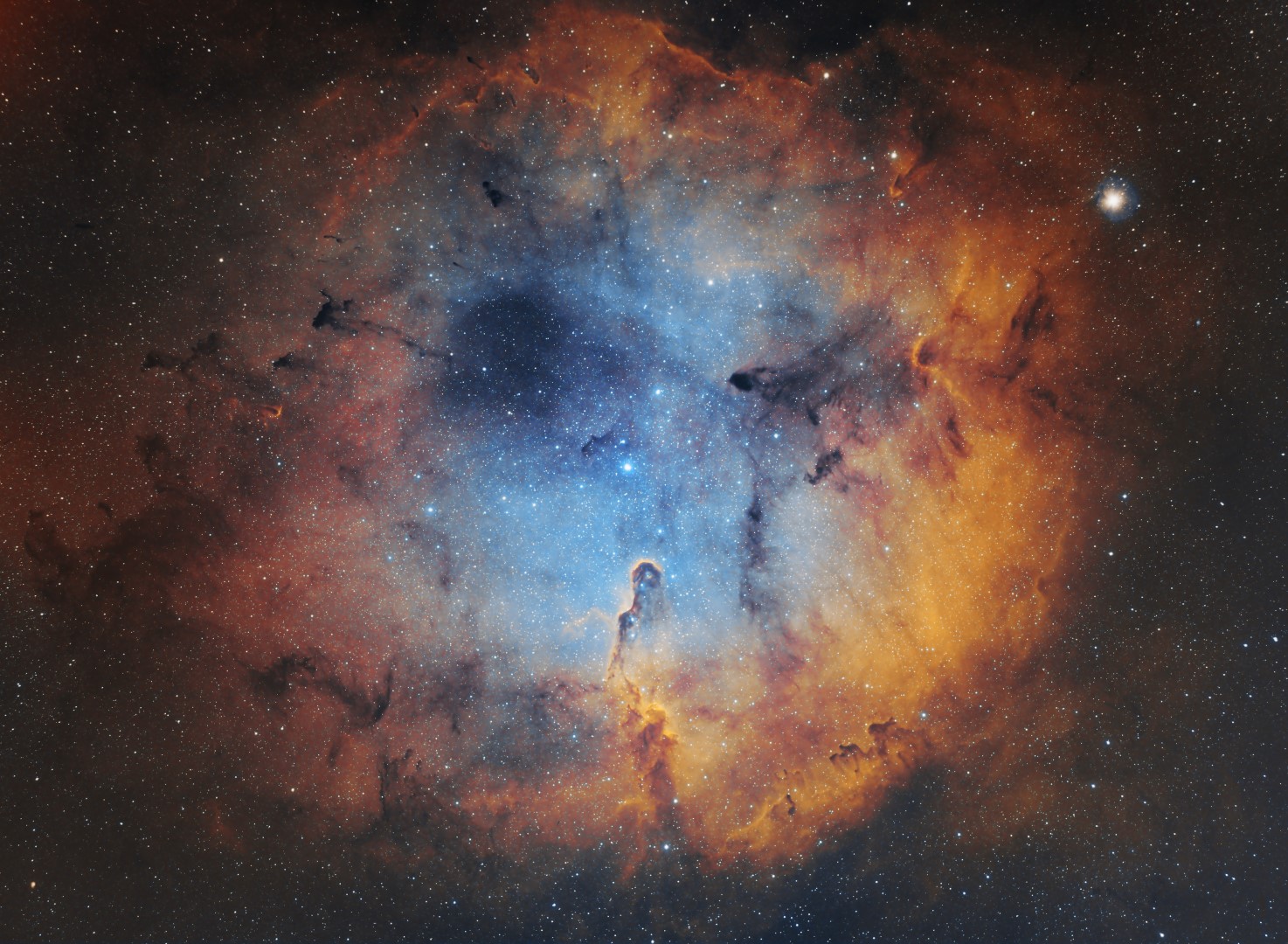No products in the cart.
 I was sent a Starizona APEX-ED .65x reducer and flattener to test and work with on my Skywatcher Esprit 100.
I was sent a Starizona APEX-ED .65x reducer and flattener to test and work with on my Skywatcher Esprit 100.
With the Apex ED reducer, an f/5.5 apo refractor like my Esprit 100 triplet becomes an incredibly fast f/3.6 astrograph. A slower f/9 telescope like an RC becomes a speedy f/5.9 system. The reduction factor provides a 1.5x wider field of view and shortens exposure times by a factor of 2.4x!
The Apex ED reducer features extra-low dispersion glass to eliminate chromatic aberration and to provide sharp star images over a 30mm image circle, capable of working with most popular CCD, CMOS and DSLR cameras up to APS-C format. In my case with using a QHY268M camera with an APS-C size sensor, I was told by Starizona the image circle would be 27mm. In terms of vignetting I would say an APS-C sensor is the largest I would pair with the APEX-ED. There is vignetting occurring but it can largely be remedied by applying flat frames during calibration of the data and also during image processing by using, as example, PixInsight’s Dynamic Background Extraction (DBE).
The Apex ED reducer fits into a standard 2″ focuser. It has M42 T-threads on the camera side, and it can accept a standard 2″ (M48) filter on the telescope side for easy use of light-pollution or other filters.
There are two different APEX units available. An “S” and a “L” model. The S model is for refractors with a focal length of between 300-500mm. The L model is for 500mm and longer focal lengths. My Esprit 100 is an F5.5 (550mm) so I am using the L version.
Backfocus for the APEX-ED is very tight at just 0.5mm and this requires some adapters and spacers to be fitted together to reach optimal backfocus. I’ve been working on this backfocus spacing for a few imaging sessions now. I am continuing to tweak it trying to achieve round stars in the corners of the field-of-view. Currently the stars are still slightly elongated (comet like) which indicates the spacing between the reducer and the camera sensor is a tad off. I’ll continue to work on it and update on how things are progressing here on my website and on my YouTube channel.
Check out this video for more on the Starizona APEX-ED reducer/flattener.
Images technical:
Esprit 100 triplet refactor https://bit.ly/36jOgAV
APEX-ED .65x reducer/flattener https://bit.ly/3rz8ZKP
QHY268M cmos camera https://bit.ly/3Ab2xNc
QHY CFW3-L 7-position filter wheel https://bit.ly/3fuiHtm
Optolong Ha and OIII filters https://bit.ly/3Ab2MYC
QHY462C and PHD2 for guiding https://bit.ly/3CaHCfj
Skywatcher EQ6 mount https://bit.ly/3fwHGMF
Skyshed Pier https://bit.ly/3fwXlLY
NINA (1.11 nightly build) for acquisition Processed in PixInsight

My story began more than 40 years ago looking up at the Moon with a small telescope my Father had. Encouraged by my parents, who bought me my very own telescope, a 4.5″ reflector, I began to explore the night sky from my family home backyard. Today I do astrophotography from my home in Kitchener, Ontario and also with remote telescopes located in New Mexico and Australia. Some of my images have won awards and have been featured online and in magazines.




Leave a comment...